There’s plenty of educational overlap in the world of hair. The fundamentals round out most classrooms, but new ideas are imminent. Given enough time, most artists experience the roles of both student and educator because working behind the chair inspires professionals at every level. That’s why two of Starling Salon’s veteran stylists, Hallie Kastanek and Amber Hollander, stepped into the educator role for a recent texture class. These stellar cutters demonstrated techniques from the Denver-famous artist Randa Rivera.
While Randa isn’t the first hair artist to surface with unique texturizing, creating shaggy elements without cutting a shag, she’s undoubtedly a trailblazer in Denver. Hallie and Amber recommend other stylists take Randa’s class before there’s another waitlist, but they’ve brought back the finer points for their fellow stylists at Starling. For Starling Salon guests, all this means is you’re benefiting from the educational overlap.
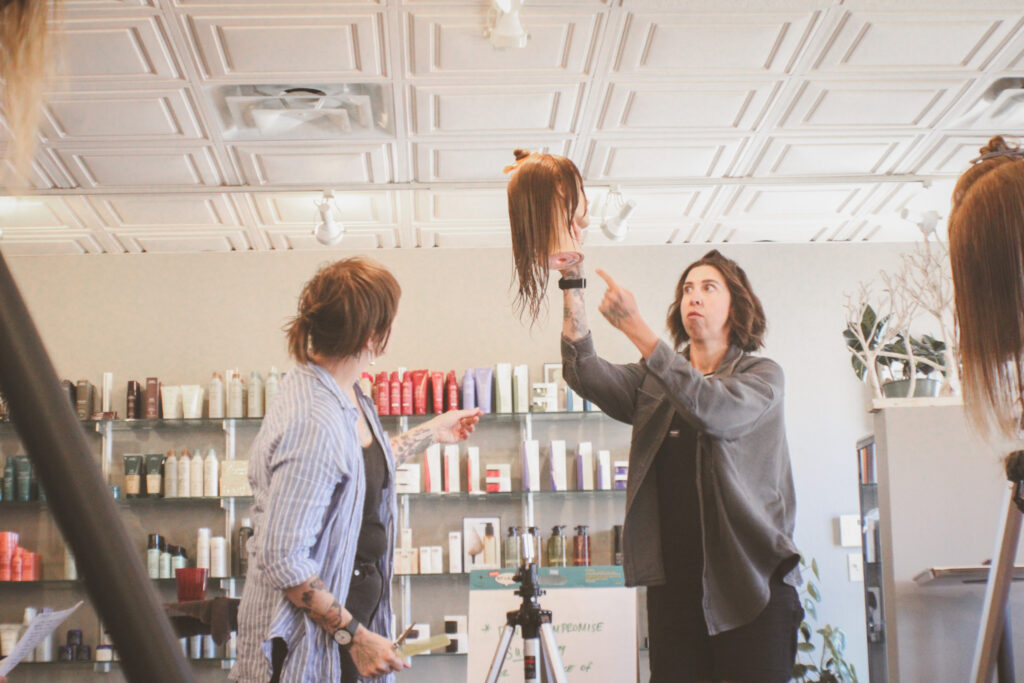
Randa’s specialty boils down to consultation and customization. Gone are the days when you could walk into a salon, ask for a bob, and watch the hair fly. Artists have follow-up questions, and your bob isn’t Anna Wintour’s bob, even if she’s your inspiration photo. Stylists are expanding their consultations so they can customize your look. Randa’s class taught Amber and Hallie to do that with deliberate face-framing techniques.
The Importance of Texture
Texture can be a tricky concept. Most salon guests know where they want their length to fall, and sometimes they know if they want layers. Texture is another hurdle. How do you see texture in a haircut?

It’s not always seen. Sometimes, your artist will texturize to alter how it feels, meaning it weighs less or styles differently. You’ve seen those scary scissors with teeth your professional flashes from time to time; they’re called texturizers. Everyday shears can achieve similar texture, but the point is your stylist has the tools to create your custom cut. That’s how hair bends and curves at the right angles or transforms from blunt to wispy.
Amber emphasizes the idea of petals in hair, noting, “When people say ‘petaling’ it doesn’t make sense to me, but Cs and Vs do. I like to cut a lot of Vs.” It’s not an industry-wide term, but this petal means to mimic the shape of a flower petal around the face. It’s a thick sliver of hair, tapering into a point. A partial crescent moon accentuating the cheekbone. It’s a heavy thorn either pulling away or pushing toward the face. Petaling isn’t something you’ll need to understand, but identifying the shape and its purpose might go a long way in your consultation.
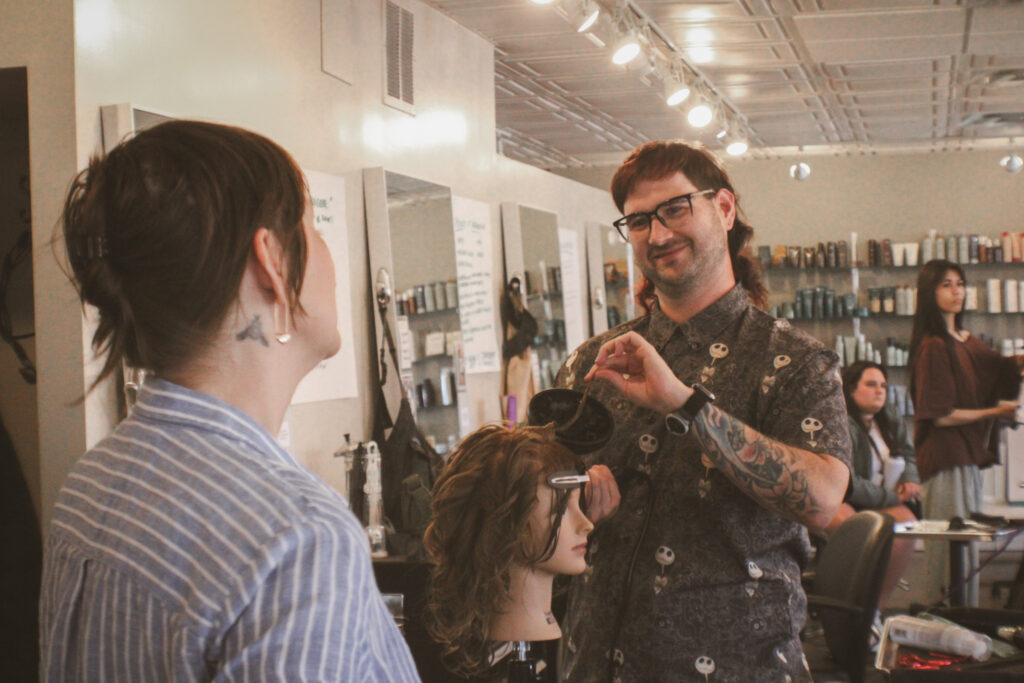
Cutting Texture
Not everyone wants a shag, but lots of people want the shag effect. They might not be able to articulate the what and why, but there is a distinction. Randa’s work demonstrates how this looks on her guests, and Amber drives the idea home while guiding the Starling team through class. The back of the head can remain long and without layers even though the front has heavy texture and disconnected face framing. In one word: fringe.
That doesn’t mean you’re cutting a blunt rainbow over your forehead, for those who think this would be a great DIY project. The details make or break this cut. Carving deliberate sections with C and V motions to create those petals challenges even experienced stylists, so make sure whoever carves out your face frame is licensed. Otherwise, you might spend the next few months under a layer of bobby pins and hats. Creating sweeping bangs and cradling your jawline is delicate because removing too much is a quick mistake to make. You can always take more off, but there’s no going back once it’s short.
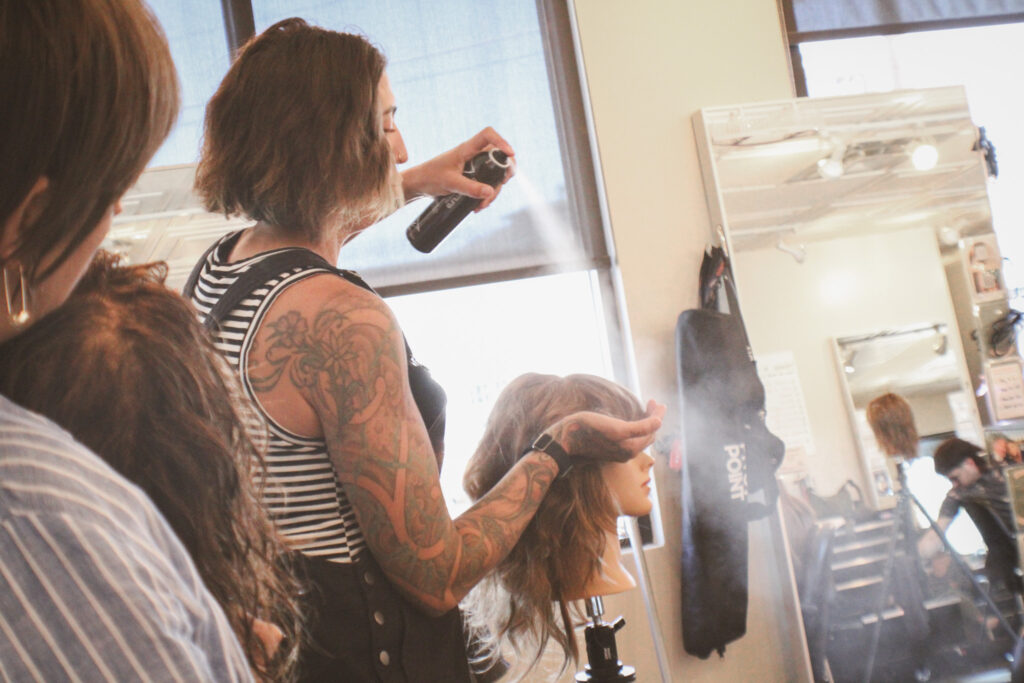
After your fringe receives all that attention, what does the back of your head get? Only as much attention as it wants. Don’t be surprised if the length gets a minor trim and goes layerless. If you don’t want a shag, why cut all those layers in?
Styling Texture
To the layman, terms like “hand styling” and “blow drying” might sound synonymous. People with curls and texture might have an easier time understanding the difference. Or maybe the ideas are crystal clear, and you’re wondering why anyone needs an explanation. For the curious, blow drying uses a concentrated attachment and a round brush, while hand styling uses a diffuser and no brush. Hallie adds, “Hand styling is a more active diffuse, and it can’t be rushed.”
Hand styling means applying diffused air to boost the dry time in hair without disrupting the natural patterns. The curly crew will see their texture shine, and those with stick-straight hair can manipulate a slight bend with patience and product. Hallie suggests using pin curl clips to secure the desired shape, twisting and using zigzag partings to soften those petals.
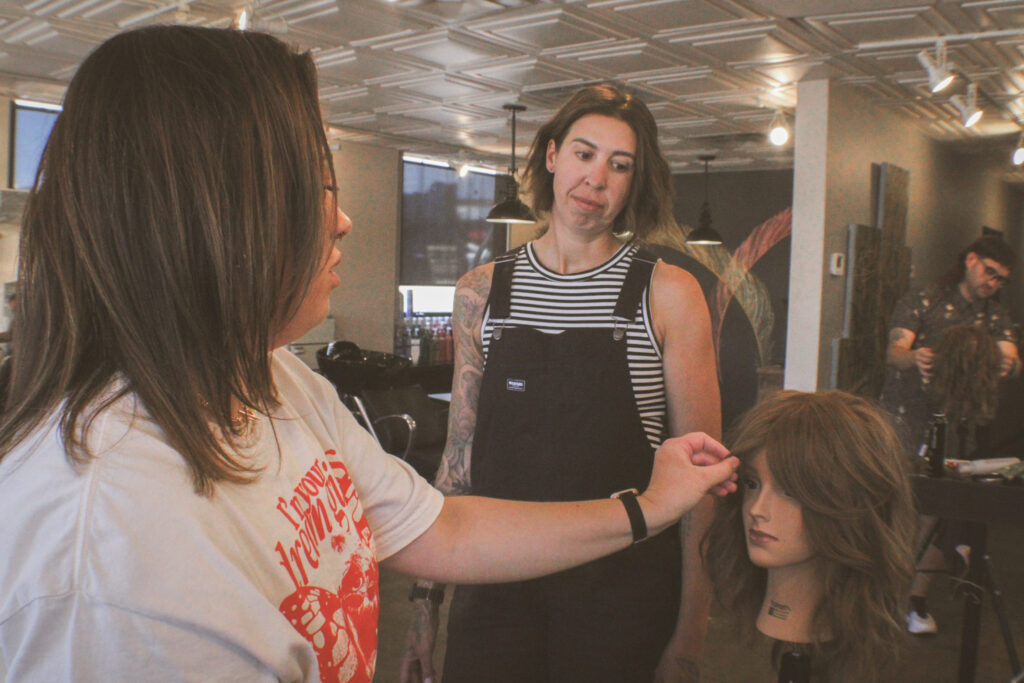
Blow drying to style is something many are familiar with. Randa’s technique focuses on enhancing the existing curl or encouraging delicate bends in straighter hair. Again, there’s a lot of twisting (but very little shouting). When twisting a round brush through the hair for shape, leaving it where it falls until it’s 100% cool is essential. Twisting with a brush doesn’t allow for the same customized shape as hand styling, but it’s faster.
However you style, even if it’s air drying at home, Randa’s face-framing focus is now ingrained in the Starling Salon curriculum. If you want a shag but don’t really want a shag, there is a solution. It might sound simple to cut petals or Cs into the hair around the face for such dynamic cuts, but trust the professionals before you end up looking like a melted anime character.
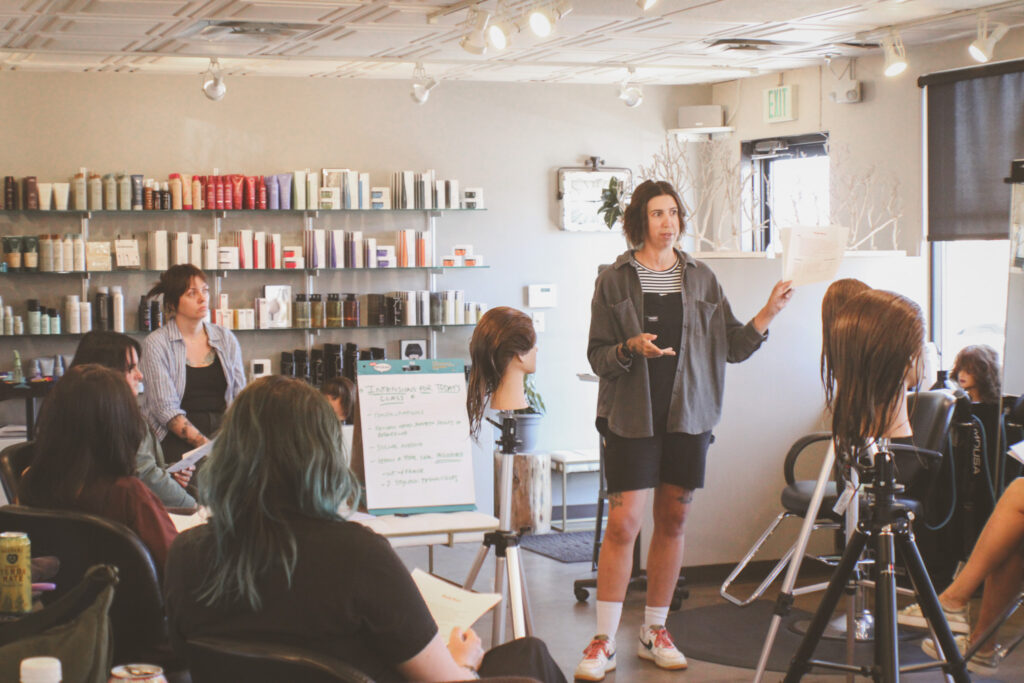
The biggest takeaway from a class like this is the versatility of technique. Salons are leaning into customization, ensuring your hair is yours and not a copy that hundreds of people wear. If the word “shag” terrifies you but the word “texture” sounds perfect, consider this education valuable and talk to your artist about what they’re learning in class.
Visit the online booking page to schedule your texture service.
Search through ULTA’s inventory of diffusers to find the one that suits your hair.


Recent Comments